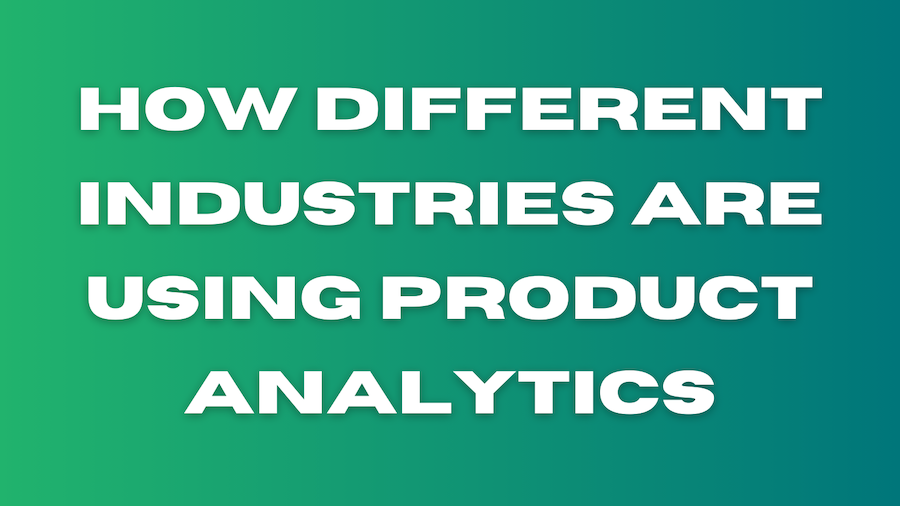Leveraging data-driven insights is not just advantageous; it’s essential. This shift is evident across various sectors where product analytics revolutionizes how businesses operate and engage with customers. By examining how specific industries utilize these tools, we can comprehensively understand their impact on innovation and efficiency.
In healthcare, improving patient outcomes has driven a surge in adopting analytics. Hospitals and clinics leverage data to track patient recovery rates, identify potential health risks, and personalize treatment plans. Operational efficiency is another critical area where analytics plays a pivotal role. Healthcare providers can minimize wait times and optimize staffing levels by analyzing patient flow and resource utilization. Moreover, powered by advanced algorithms, predictive diagnostics enable early detection of diseases, potentially saving lives and reducing treatment costs.
In the finance sector, managing risk and preventing fraud are top priorities. Financial institutions employ analytics to scrutinize transaction patterns, identifying anomalies that may indicate fraudulent activity. Customer segmentation, another crucial application, helps banks and financial services tailor their offerings to meet the diverse needs of their clientele. By understanding customer behavior and preferences, they can design personalized financial products that enhance customer satisfaction and loyalty.
Retailers face the constant challenge of balancing inventory levels with customer demand. Product analytics come to the rescue by providing insights into purchasing trends and inventory turnover rates. This enables retailers to maintain optimal stock levels, reducing overstock and stockouts. Additionally, understanding customer behavior through data analysis allows retailers to create personalized marketing strategies, enhancing the shopping experience and boosting sales.
In the fast-paced world of e-commerce, improving conversion rates is a primary goal. By mapping the user journey, businesses can identify bottlenecks in the purchasing process and implement strategies to streamline the customer experience. Product recommendations powered by analytics help personalize the shopping experience, increasing the likelihood of purchase and fostering customer loyalty.
Education is another sector benefiting significantly from data insights. By analyzing student performance data, educators can identify areas where students struggle and provide targeted interventions. Understanding the factors contributing to student dropouts enhances retention strategies, allowing institutions to implement measures that improve student engagement and success rates. Additionally, curriculum effectiveness can be assessed by evaluating student outcomes and feedback, leading to more refined and impactful educational programs.
Manufacturing industries are optimizing supply chains through data analytics, ensuring timely delivery of materials and products. Monitoring production data enhances quality control processes by detecting defects early, reducing waste, and improving product standards. Predictive maintenance is another vital application, where machinery is monitored in real-time to predict and prevent breakdowns, ensuring continuous and efficient operations.
Telecom companies rely heavily on data to enhance network performance and reduce customer churn. By analyzing network usage patterns and identifying areas of congestion, they can optimize network infrastructure to ensure high-quality service. Understanding customer behavior through analytics helps telecom companies devise strategies to retain customers and improve overall satisfaction.
In the hospitality industry, guest experience is paramount. Hotels and resorts use analytics to monitor guest feedback and preferences, allowing them to personalize services and enhance the overall stay experience. Analyzing occupancy rates helps optimize pricing strategies, ensuring maximum revenue during peak and off-peak periods.
Entertainment companies utilize data to gauge audience engagement and content performance. By understanding what types of content resonate with viewers, they can produce more engaging and successful shows and movies. Subscription trends analysis helps streaming services and other entertainment platforms refine their offerings and attract more subscribers.
Real estate professionals use analytics to track market trends and property valuations. By understanding the factors influencing property prices, they can make informed investment decisions and offer valuable insights to clients. Customer insights gathered through data help real estate agents personalize their services, enhancing client satisfaction and loyalty.
Across all these industries, the strategic application of product analytics drives significant improvements in efficiency, customer satisfaction, and overall performance. By embracing data-driven decision-making, businesses can stay ahead of the curve, innovate continuously, and deliver superior value to their customers.


